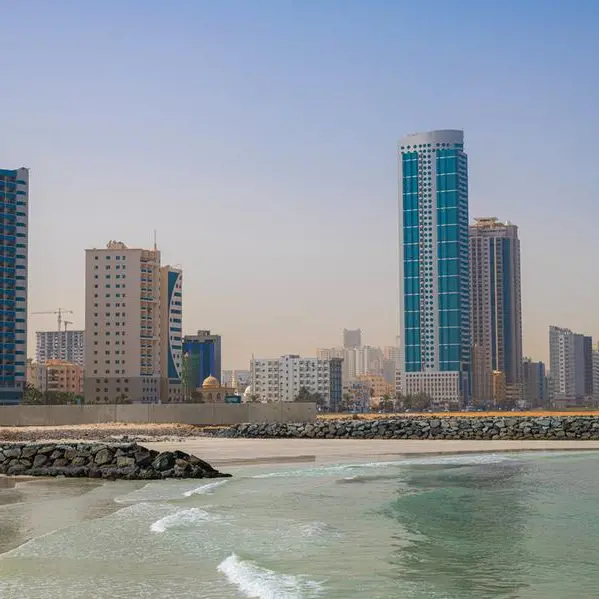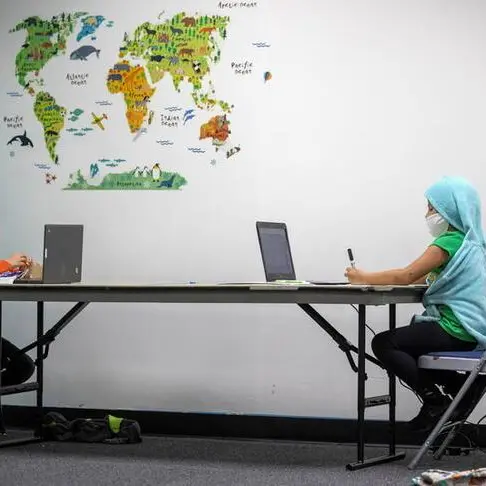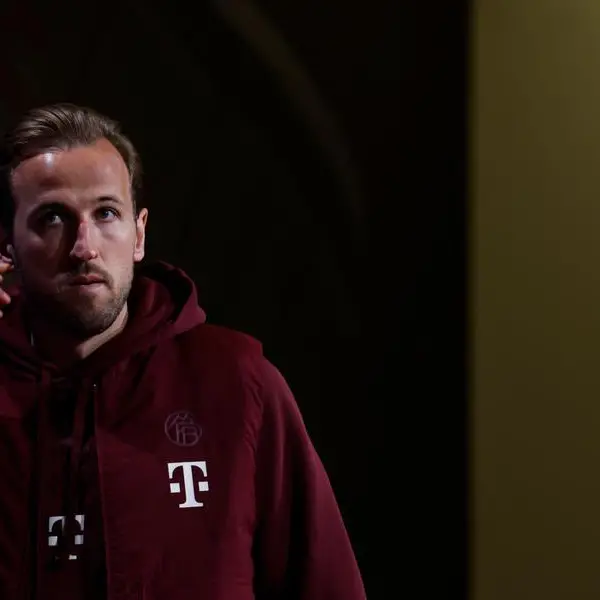Abu Dhbai- The landmarks restored by Emirati support include the Dome of the Rock; Umar ibn al-Khattab Mosque; Church of the Nativity in Bethlehem; Great Mosque of al-Nuri and its Humpback Lighthouse, al-Hadba; Our Lady of the Hour Church and Al Tahira Church in Mosul; Sheikh Khalifa bin Zayed Al Nahyan Theatre in France, previously known as the Imperial Court Theatre at Fontainebleau or the Château de Fontainebleau; Museum of Islamic Art in Cairo; McMillan Library in Nairobi; Nuzul Al Salam in Muharraq in Bahrain, and other landmarks.
The UAE considers these historic landmarks as part of global human heritage, taking on a leading role in conservation efforts for cultural and historic sites across the world ever since it accepted the 1972 Convention Concerning the Protection of World Cultural and Natural Heritage in 2001.
Sheikh Nahyan bin Mubarak Al Nahyan, Minister of Tolerance, noted that the UAE’s efforts to preserve human heritage has helped it spread the culture of tolerance and promote peaceful coexistence around the world.
He emphasised that the UAE does not discriminate against any creed, race or culture in its efforts to restore heritage and historical landmarks.
Noura bint Mohammed Al Kaabi, Minister of Culture and Knowledge Development, stressed that the UAE’s efforts are based on its belief in reinforcing the concept of human coexistence and protecting global heritage and landmarks, adding, "We are proud of the fact that the UAE is connected to leading international historical landmarks." Al Kaabi noted that the selection of the UAE in November 2019 as a permanent member of the International Centre for the Study of the Preservation and Restoration of Cultural Property, ICCROM, is an appreciation of its continuous work and achievements in safeguarding cultural heritage.
She stressed that the UAE role was not limited to supporting restoration works and operations, noting the country's active presence while holding the membership seat of the World Heritage Committee from 2009 to 2013 and the membership of the Intergovernmental Committee for the Safeguarding of the Intangible Cultural Heritage which enabled the country to leave its significant impact on protection and preservation efforts of world heritage sites and landmarks. The Minister added that the UAE hosted many conferences and seminars related to the preservation of the world-historical and cultural heritage. Al Kaabi went on to say that the UAE will continue cooperating with all relevant countries in drafting policies and programmes that will protect human and cultural heritage and improve the capacities of cultural institutions in charge of managing heritage sites around the world.
Below are some of the UAE's restoration and preservation of cultural and heritage sites' efforts: The Dome of the Rock - Jerusalem, Palestine One of the holiest sites in Islam, the Dome of the Rock is the earliest archaeologically-attested religious structure to be built by a Muslim ruler, Umayyad Caliph Abd al-Malik, in 691–92 CE. Listed as a UNESCO World Heritage Site, the building's inscriptions contain the earliest epigraphic proclamations of Islam and of the Prophet Muhammad.
In 2004, tremors from an earthquake near the Dead Sea had badly damaged the roof on the Dome of the Rock and other infrastructure of the Al Aqsa compound. Shortly after, the late Sheikh Zayed bin Sultan Al Nahyan funded the restoration efforts, which were overseen by the Emirates Red Crescent and the Jerusalem Islamic Waqf. The Church of the Nativity - Bethlehem, Palestine In 2002, Sheikh Zayed financed the restoration of the Church of the Nativity, in coordination with the United Nations Educational, Scientific and Cultural Organisation, UNESCO. Restoration efforts began following a four-week Israeli military siege and attack that caused damage to the site and its neighbouring Umar ibn-Al Khattab Mosque. According to the International Council on Monuments and Sites, ICOMOS, a total of US$1.4 million in damages was estimated across the Old City of Bethlehem, with direct damage to the Church of the Nativity complex from projectiles and fire was estimated to total about US$77,000.
The Church of the Nativity, or Basilica of the Nativity, is one of the oldest churches in Palestine and holds prominent religious significance to Christians of various denominations as the birthplace of Jesus, with its grotto being the oldest site continuously used as a place of worship for the Christian faith. The Church was first commissioned by Constantine the Great in the fourth century (301 - 400) AD.
In 2008, the Church of the Nativity was placed on the '100 Most Endangered Sites' watch list by the World Monuments Fund. It was listed as a World Heritage Site by UNESCO, but was also listed as 'endangered' by the UN cultural agency. In 2019, UNESCO removed the church from the endangered list following high-quality restorations of its roof, exterior facades, mosaics and doors. The Omar ibn al-Khattab Mosque - Bethlehem, Palestine Opposite the Church of the Nativity, and named after the second Muslim Caliph, the Omar ibn al-Khattab Mosque is the only mosque in the Old City of Bethlehem. The Caliph had travelled to Bethlehem in 637 CE issuing a law guaranteeing respect for the Church of Nativity and safety for Christians and clergy. He is alleged to have prayed at the location of the mosque, which was built in 1860 on the west side of Manger Square. The late Sheikh Zayed bin Sultan also financed restoration of the Mosque of Omar in 2002, alongside the restoration efforts of the Basilica of the Nativity. The Great Mosque of al-Nuri - Mosul, Iraq In 2018, the UAE, UNESCO and Iraq's Ministry of Culture signed a historic agreement where the Emirates will provide US$50.4 million to contribute to the rebuilding of the Great Mosque of al-Nuri and its Humpback Minaret, Al Hadba, which were built more than 840 years ago. The five-year project supported by the UAE concerns the restoration and reconstruction of the historic landmarks of Mosul, Iraq's second largest city. notably the emblematic Al-Nouri Mosque and its celebrated, leaning 45-metre Al-Hadba Minaret. The mosque and minaret were destroyed by Daesh in 2017.
The Our Lady of the Hour Church and Al Tahira Church - Mosul, Iraq The Our Lady of the Hour Church is one of the most important sites in Mosul. Even though its construction date is difficult to confirm, stones discovered on the site date back to the 12th and 13th centuries, and writings inside the church point out that it was restored in 1744 after being damaged by a Persian attack.
The UAE’s support for the reconstruction of the two churches is helping to restore the bright civilised image of the city of Mosul, and is encouraging social unity and the return of refugees, especially Christians through the restoration of the historical landmarks and places of worship that give the Mosul community its identity and soul after the terrorists tried to erase the cultural identity, civilised and human history of Mosul.
The Sheikh Khalifa bin Zayed Al Nahyan Theatre - Paris, France The Sheikh Khalifa bin Zayed Al Nahyan Theatre, previously known as the Imperial Court Theatre at Fontainebleau or the Château de Fontainebleau, in the French capital, Paris, is another witness to the UAE’s role in preserving world heritage. It reopened in June 2019 after years of extensive restoration and renovation work funded by the Department of Culture and Tourism - Abu Dhabi.
The French Government named the theatre after His Highness Sheikh Khalifa bin Zayed Al Nahyan, in recognition of the UAE’s contribution to its restoration.
The McMillan Library - Nairobi, Kenya Upon the directives of H.H. Dr. Sheikh Sultan bin Muhammad Al Qasimi, Supreme Council Member and Ruler of Sharjah, the Emirate of Sharjah financed the restoration of the historic McMillan Library in the Kenyan capital, Nairobi.
The McMillan family built the library when Kenya was under British rule, in honour of the American explorer and charity and humanitarian activist, William Northrop McMillan, who settled in Kenya. The library was built with the help of the Carnegie Corporation, and is the only library building in Kenya protected by a law passed by the country’s parliament, the "McMillan Memorial Library Act No. 217 for 1938." The Museum of Islamic Art - Cairo, Egypt In 2014, an Emirati donor financed the restoration and maintenance of the Museum of Islamic Art Cairo, after it was damaged by a terrorist attack.
The museum dates back to 1869, and its foundations were established in 1880. The Egyptian government then gathered Islamic art pieces from historic mosques and establishments to be store in the Eastern Iwan of the Al-Hakim bi-Amr Allah Mosque, and in 1881, a decree was issued to form a committee to preserve Arab and Muslim antiquities. As the gathered pieces from Egypt, India, China, Iran, Turkey and Andalusia were numerous, a grand museum for Islamic art was built and inaugurated on 28th December 1903, in Bab Al Khalq Square in Cairo.
The museum in Cairo is the largest Islamic museum in the world, and it contains hundreds of rare manuscripts and over 100,000 artefacts representing 75 percent of the world’s Islamic artefacts, showcasing Islamic arts throughout the ages. The project’s launch was held in the presence of the Dr. Mamdouh Al-Damaty, Minister of Antiquities and Heritage of Egypt, and Minister of International Cooperation of Egypt, Dr. Naglaa Al-Ahwani.
Nuzul Al Salam - Muharraq, Bahrain In October 2019, the UAE and the Sheikh Ibrahim bin Mohammed Al Khalifa Centre for Culture and Research in Bahrain inaugurated the Nuzul Al Salam in Muharraq. The residence is one of the projects that aimed to restore heritage buildings supported by the UAE, as part of a joint cultural programme that also restored the Fathallah House and reconstructed the Green Corner Building. The restoration of the house and its internal re-design work is part of a signed agreement to strengthen the cultural cooperation between the UAE and Bahrain, to preserve their common historical heritage.
The Fathallah House, which has been a historic landmark in Muharraq since 1947, has attracted tourists coming to visit the Pearl Road, which is registered on the list of world heritage sites, to discover the beauty of Bahraini architecture.
In 2016, the UAE organised a two-day international conference on safeguarding endangered cultural heritage in Abu Dhabi, in partnership with France, under the framework of the "International Partnership Initiative," to protect cultural heritage sites in areas of armed conflict.
The conference led to the launch of the Abu Dhabi Declaration, the first initiative of a long-term project, and witnessed the commitment of states to establishing a fund to finance the protection of antiquities in conflict areas.
© Copyright Emirates News Agency (WAM) 2020.











